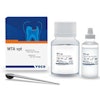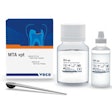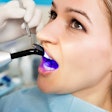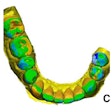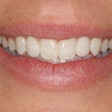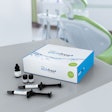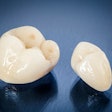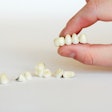
Should restorations be added to school-based sealant programs? A new study found that a school-based caries prevention program in which hygienists place interim therapeutic restorations and sealants may be more effective than placing sealants alone.
Researchers from New York University (NYU) followed more than 8,000 U.S. children for 10 years to determine whether interim restorations could be a reasonable addition to school-based caries prevention programs. Their findings were published in BMC Oral Health (March 27, 2018).
"Given the high variability in school-based caries prevention, comparing the effectiveness of different prevention agents, frequency, or intensity of care can lead to optimal program design," wrote the authors, led by Ryan Ruff, MPH, PhD.
Ruff is an assistant professor at the NYU College of Dentistry and College of Global Public Health. His co-author, Richard Niederman, DMD, is a professor at the NYU College of Dentistry and chair of the department of epidemiology and health promotion.
Restorations slow the rate of decay
Nearly 30% of school-aged children in the U.S. experience dental caries, including about half of rural, minority, and Medicaid students. School-based sealant programs have proved particularly beneficial for these at-risk children, so the NYU researchers were curious whether school-based programs would be even more effective if a secondary prevention method was added.
To find out, they followed two groups of 5- to 12-year-old children from 2004 to 2014. The children attended one of 42 rural or urban Title I elementary schools, meaning that more than half of students qualified for reduced price meals. The researchers chose to target these schools because low-income children also typically don't have adequate access to dental care.
“school-based caries prevention across programs was associated with a reduced risk of untreated decay in permanent teeth over time.”
They split 8,207 participating students into two research groups. The first group received biannual dental screenings, oral hygiene instructions, prophylaxis, fluoride varnish, and glass ionomer sealants on first and second molars. The second group also received all of the above, in addition to glass ionomer interim therapeutic restorations (ITRs) on asymptomatic teeth with carious lesions and sealants on premolars and nonmolars.
The risk of experiencing untreated decay in permanent teeth significantly decreased for both groups of children. However, those in the group with both interim therapeutic restorations and sealants were 33% less likely to experience untreated decay in permanent teeth than those in the sealant-only group. The rate at which the kids developed caries was also significantly slower for the restoration group.
"Interim restorations have been previously shown to reduce the levels of cariogenic oral bacteria, potentially preventing the progression of decay and lowering the rate of additional caries on adjacent teeth due to increases in unchecked bacteria," the authors wrote. "Thus, the survival rate of ITRs may reduce untreated decay in school-aged children, particularly those without regular access to dental care, and help in prevention new cases."
Moving forward
The study had a number of shortcomings, according to the authors. First, although the study was open to all students, only 30% chose to participate. Therefore, the population of study participants may have differed from those who did not participate.
Furthermore, the researchers did not account for socioeconomic status or race/ethnicity in their model, which could be potentially confounding variables. In addition, only cavitated and filled teeth were included in the study, so any tooth that was lost in between the observation period would not have been counted.
Nevertheless, the researchers are confident that the findings from this study may be generalized to other high-risk, low-income primary schoolchildren and that interim therapeutic restorations may reduce risk of untreated decay in these children.
"Overall, school-based caries prevention across programs was associated with a reduced risk of untreated decay in permanent teeth over time, and a prevention program with higher treatment intensity was associated with a significantly lower risk of decay," the study authors wrote. "Specifically, children receiving prevention that included interim therapeutic restorations and sealants on all teeth had a lower risk of untreated decay in permanent dentition compared to prevention with sealants placed on only the first and second molars."
